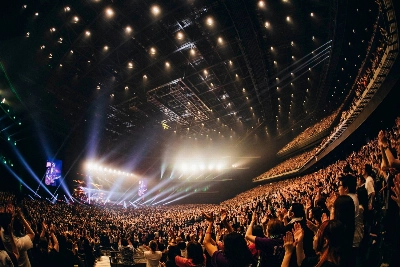The problem with Tokyo Metro is that it might just be too much of a railroad, some analysts argue.
Shares in the subway company started trading on the Tokyo Stock Exchange on Wednesday following the biggest initial public offering in Japan in more than half a decade. A total of ¥348.6 billion ($2.3 billion) was raised, valuing Tokyo Metro at about ¥700 billion.
Public enthusiasm has been strong for the listing and for the company itself, which began as the Tokyo Underground Railway with a pilot service that covered a 2.2-kilometer stretch between Asakusa and Ueno in 1927.
Analysts have been somewhat skeptical about the long-term potential of the company.
“Tokyo Metro’s revenue is expected to remain steady in the near term, but I have reservations about the prospect of significant future growth,” said Kazuta Fukushima, a senior research officer at Sompo Institute Plus, a Tokyo-based think tank.
The subway company's operating profit more than doubled to ¥76 billion in the year ended in March, while its network connects with nine of the 10 busiest stations in the capital. Tokyo Metro carried 2.38 billion passengers in the last fiscal year, far more than Tokyu’s 1.05 billion.
What bothers the critics is the ratio of railway business to other business.
In fiscal 2023, 83.5% of Tokyo Metro’s operating profit came from carrying passengers on trains. For East Japan Railway, known as JR East, about half of its operating profit that year came from its transportation business, and for Tokyu, it was about one-third.
“Tokyo Metro’s nonrailway businesses are quite weak,” Fukushima said.
Other railway operators have been focusing on real estate-related businesses and have turned many of their stations into multi-use complexes. Those companies run above-ground stations, so they can develop upward to attract tenants and generate revenue.
With Tokyo Metro being an underground railway operator, it cannot take this approach although it wants to make its real estate business more profitable, Fukushima noted.
The company needs to cultivate new revenue sources while its subway business is still strong, he argues.
There is some urgency, as the population of the capital city, where Tokyo Metro operates, is expected to peak in about a decade.
“When that happens, the impact on its railway business will likely be bigger than for rival companies,” Fukushima said.
Remote work is also an issue, as fewer people commute to the office while more work from home.
“In light of future demographic changes and a more competitive business environment, growth of our transportation business may be limited,” Tokyo Metro warned in a stock exchange filing.
“To ensure the group's continued growth and strengthen the earnings foundation, we must scale our nonrailway businesses, such as real estate, distribution and advertising.”
Tokyo Metro has some advantages over other railways, as it operates in some of the most prosperous and densely populated postcodes in Japan, Fukushima notes.
“It is possible that Tokyo Metro will be Japan’s unique, leading subway operator,” he said.
The Japanese government owned 53.4% of Tokyo Metro shares while the rest was owned by the Tokyo Metropolitan Government. They both sold half of their shares in the offering.
The IPO, in which shares were sold at ¥1,200, was the largest since SoftBank Group’s telecoms unit went public in 2018 and raised more than ¥2.5 trillion yen.
By market capitalization, Tokyo Metro will be about one-fifth the size of JR East and about two-thirds the size of Tokyu.
With a 3.3% dividend yield, the new listing is an attractive opportunity for some investors given the income it can generate.
But whether the stock offers growth remains unknown due to concerns over the lack of a convincing growth strategy, Fukushima said.


















With your current subscription plan you can comment on stories. However, before writing your first comment, please create a display name in the Profile section of your subscriber account page.